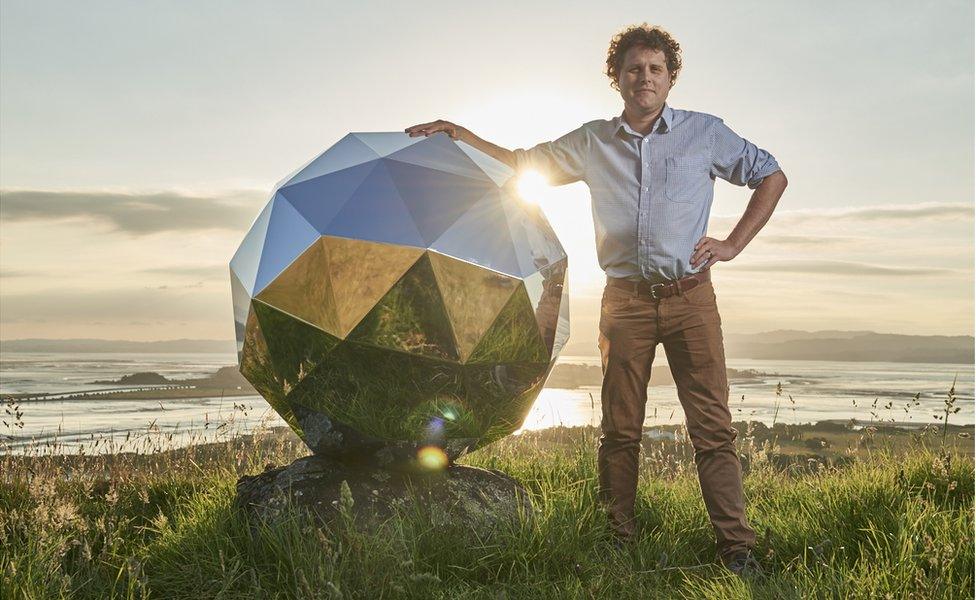'Disco ball' put into space from NZ
- Published

Peter Beck says he wanted to create a "shared experience"
A highly reflective sphere has been placed in orbit by a New Zealand-launched rocket.
Akin to a giant "disco ball", the object should be visible to the naked eye as it sweeps across a twilight sky.
It was lofted by American start-up Rocket Lab, whose Electron boosters operate from the North Island.
The company said its "Humanity Star" was an attempt to create a shared experience for everyone on Planet Earth.
"No matter where you are in the world, or what is happening in your life, everyone will be able to see the Humanity Star in the night sky," said Rocket Lab CEO Peter Beck in a statement.
"My hope is that all those looking up at it will look past it to the vast expanse of the Universe and think a little differently about their lives, actions and what is important for humanity."
The announcement solves a mystery following Rocket Lab's most recent launch from the Mahia Peninsula last Sunday.
Amateur satellite-watchers will often count the elements that finally make orbit at the end of a rocket's ascent to check the mission went as planned - but they were puzzled in this case by Sunday's number.
Five objects could be accounted for by the vehicle's spent parts and the pre-publicised payload of small spacecraft.
But a sixth item was unexplained - until now.
The Humanity Star is a geodesic sphere constructed from carbon fibre with 65 highly reflective panels.
Circling the Earth every 90 minutes, it should be most visible in the darkened sky when the setting or rising sun shines up from below the horizon to catch the spinning ball's surface.
These are the same observing conditions that offer the best view of the International Space Station when it comes overhead. It shines brightly because of its huge solar arrays.
Sunday's Electron launch from NZ's Mahia Peninsula
This is not the first time an object has been launched purely for its reflective properties.
The Russian Znamya project experimented with space mirrors in the 1990s.
Another Russian effort last year put up a small sat that was designed to deploy a pyramidal reflector, although it seems to have failed.
The US artist Trevor Paglen is currently working on a future sculpture in space that would take the form of a giant diamond balloon. Again, it would be visible to the naked eye down on Earth.
Professional astronomers usually take a dim view of such projects; they dislike having bright, artificial objects pass across, and obstruct, their view of the stars.
Rocket Lab says the Humanity Star will not be up for long. The sphere's orbit is expected to decay over the coming months as it brushes through the extended high atmosphere. Eventually, it will fall to an altitude where it will burn up.
that will help the public to work out when they can see the ball.
Jonathan McDowell, a satellite-tracker and astronomer at the Harvard-Smithsonian Center for Astrophysics, commented: "The irony is that it's poorly placed for observation right now - low on the horizon for evening passes in New Zealand and not visible from the USA until March - if it stays up that long."
Jonathan.Amos-INTERNET@bbc.co.uk, external and follow me on Twitter: